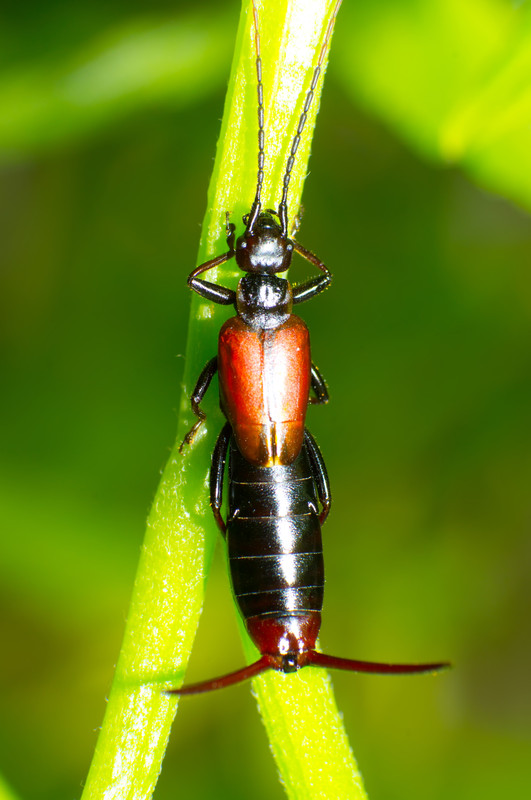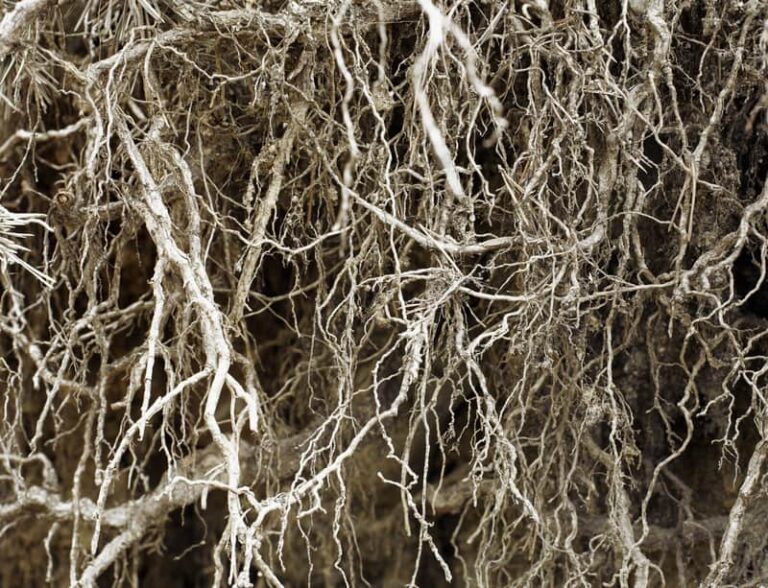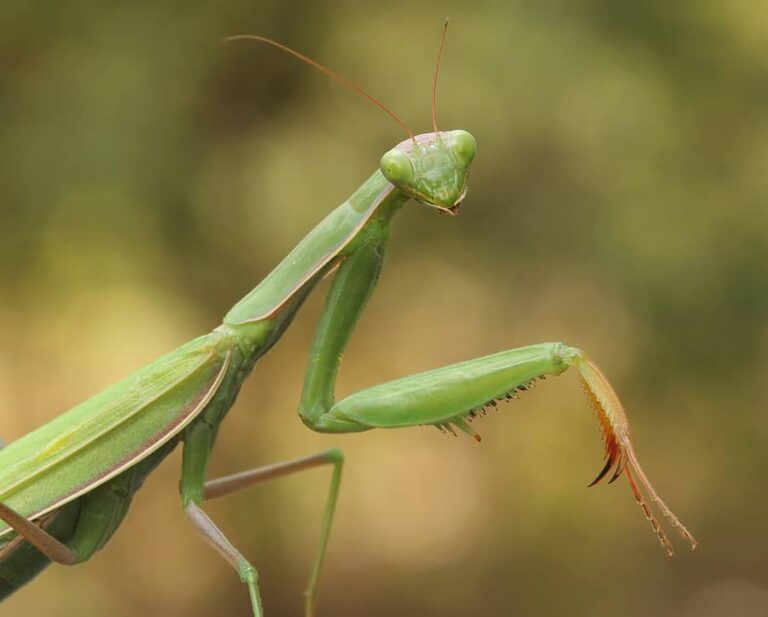Earwig Organic Pest Control
Earwigs are reddish brown with short leathery forewings and a pair of pincers or forceps at the end of the abdomen. Earwigs are about ¾ inch long. They are mostly nocturnal.
Earwigs eat seedlings and the tender tips of plants, but they also eat decaying matter and pest insects including aphids and mites. In short, earwigs are not wholly pests; they can be beneficial to the garden. Before setting out to destroy earwigs, check at night with a flashlight to see if they are doing any damage to plants in your garden. A few earwigs on a plant are not pests.

Good Products for Pest and Disease Control at Amazon:
- Garden Safe Snail and Slug Bait
- Bonide Sulfur Fungicide
- Monterey BT Caterpillar Killer
- Neem Bliss 100-% Cold Pressed Neem Oil
- Safer Brand Insect Killing Soap
- PyGanic Botanical Insecticide
Adult earwigs lay clusters of 20 to 60 pearly white eggs in autumn. The eggs are laid in the top few inches of soil in spring. The eggs hatch in about seven days; the larvae remain in the soil where they are fed by their mother. The nymphs look similar to their parents, only smaller. The infant earwigs go through a series of instars–developmental stages, molting between each and eventually becoming adults. The forceps of adult male earwigs become curved and the females’ forceps remain straight.
Earwigs overwinter in the soil in cold-winter regions. In mild-winter regions, earwigs are active year-round. There are one or two generations of earwigs each year.
Earwigs are found throughout North America. Contrary to folklore and their ferocious appearance, earwigs do not attack humans.
Scientific Name: Forficula auricularia
Target plants
Earwigs eat seedlings and tender leafy crops such as lettuce, celery stems, ripening tomatoes, and strawberries. Earwigs also chew on corn silks which can result in poor kernel formation.
Feeding habits and damage
Earwigs feed at night sometimes eating seedlings and tender plant tips. A few earwigs are not likely to do much damage, but clusters of hundreds of earwigs can be destructive.
Organic controls
Unless you know for certain earwigs are damaging plants in your garden, let them be. Earwigs do eat pest insects including aphids, mites, and nematodes. Keeping the garden free of decaying organic matter is a way to control the earwig population. Trap earwigs in low-sided cans filled with vegetable oil and a drop of bacon grease or tuna fish oil. Trap earwigs in a loosely rolled-up moist newspaper,
Organic control calendar
Here is what you can do seasonally to control earwigs:
- Before planting: Clear the garden of plant debris and remove weeds. Earwigs like to shelter in cool, dark places so keep the garden free of wood, boards, or containers under which they can hide. Clear the garden of loose mulch or wood chips under which earwigs may hide.
- At planting time: Trap earwigs with a loosely rolled newspaper that has been dampened. They will seek shelter in the damp paper as daylight approaches. Place flower pots turned upside down around the garden with an edge propped up—again earwigs will shelter in cool, dark places.
- While crops develop: If earwigs are damaging your crops, use a pepper or garlic spray to repel them. Trap pest earwigs and drown them in soapy water. But stop trapping them as soon as they are no longer damaging plants.
- After harvest: Remove plant debris and weeds from the garden.
Natural predators
Tachinid flies, toads, and birds.
Related articles:
Vegetable Garden Diseases Problem Solver
Vegetable Garden Organic Weed Control
Vegetable Garden Organic Pest Control
Garden Planning Books at Amazon:







